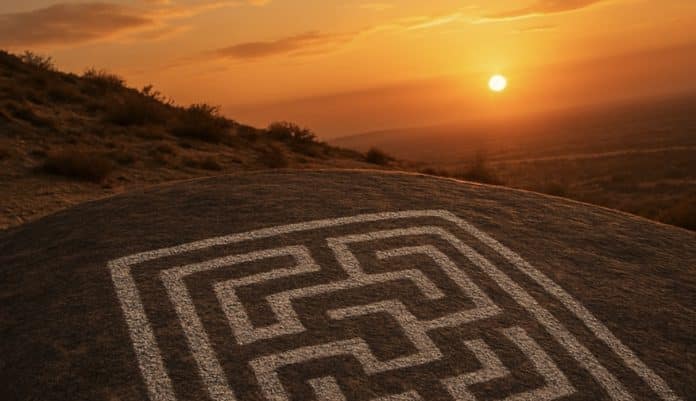Hemet, CA – A massive stone carving hidden in the hills of Hemet has puzzled experts for decades, and new interest in the ancient site is once again drawing visitors. The Maze Stone, a three-foot-square petroglyph carved into a boulder, depicts a maze formed by four interlocking swastikas — a design unlike anything else found in California.
According to Riverside County historical archives, the Maze Stone was donated to the county in 1956 and is now protected within Maze Stone County Park. Archaeologists have connected the design to a little-known “Maze Culture,” identified only from this carving and one other found in San Diego County. Beyond these two sites, no physical evidence of the culture has been discovered.
Some researchers believe the design could be as old as 15,000 years, possibly created by Cascadians — a prehistoric group some theorize were ancestors of the Maya. Others argue it may have been carved around A.D. 500 by Chinese Buddhist monks, pointing to its resemblance to religious symbols from Asia. A few historians even suggest it might indicate Chinese contact with North America long before Columbus.
Despite decades of study, no conclusive evidence has confirmed any of these theories. The Maze Stone remains a mystery, attracting historians, amateur archaeologists, and curious travelers eager to see the ancient etching for themselves. Visitors can reach the site by taking State Highway 74 and driving 3.2 miles north on California Avenue to Maze Stone County Park, where the landmark is on display year-round.
This article was produced by a journalist and may include AI-assisted input. All content is reviewed for accuracy and fairness.
Follow us on Instagram & Facebook for more relevant news stories and SUPPORT LOCAL INDEPENDENT NEWS! Have a tip? Message us!




